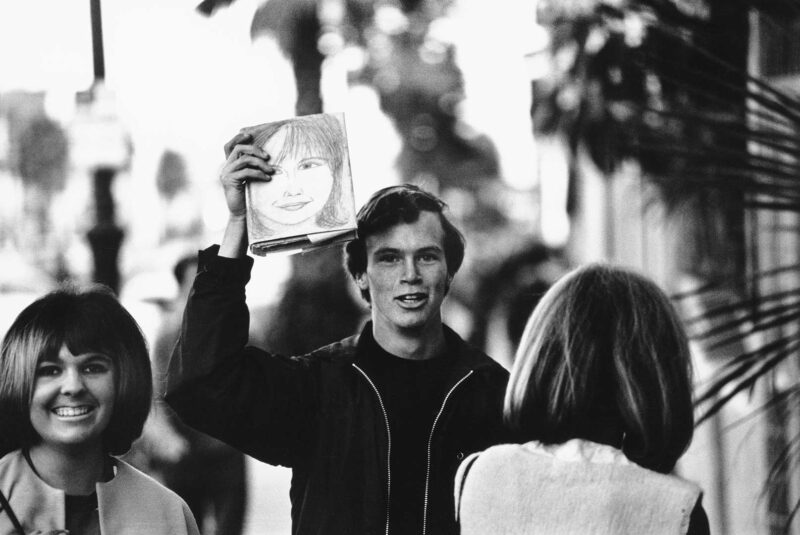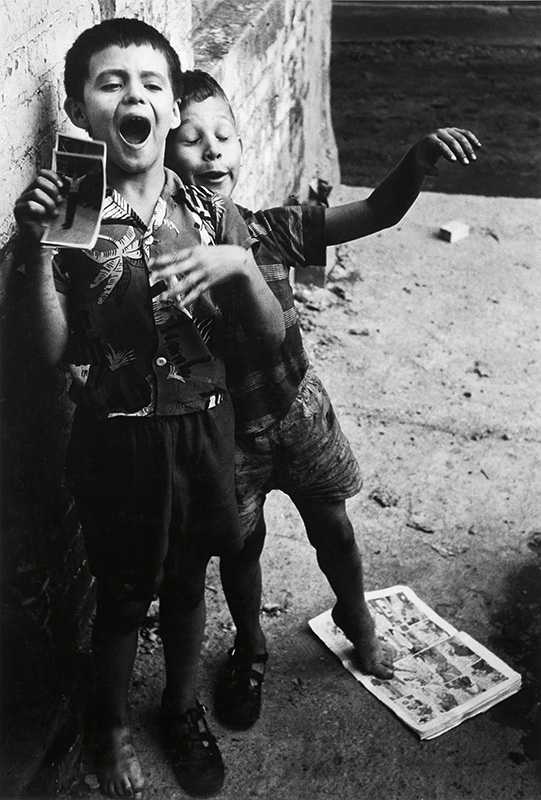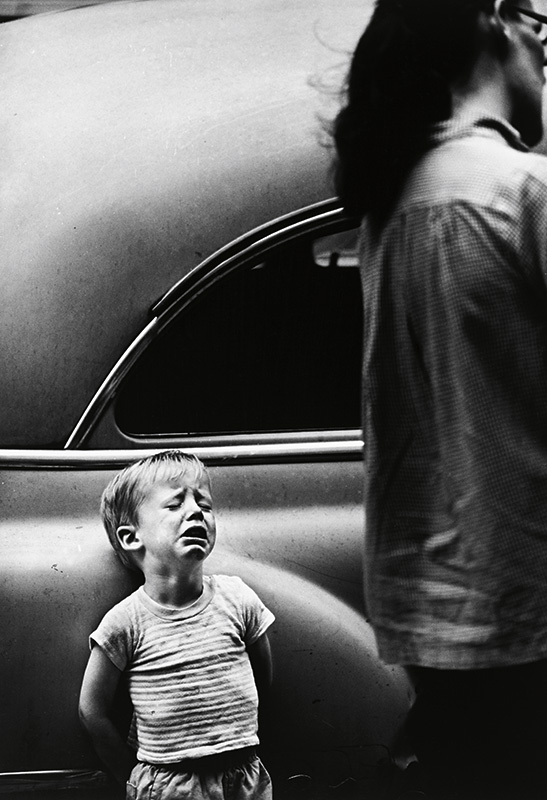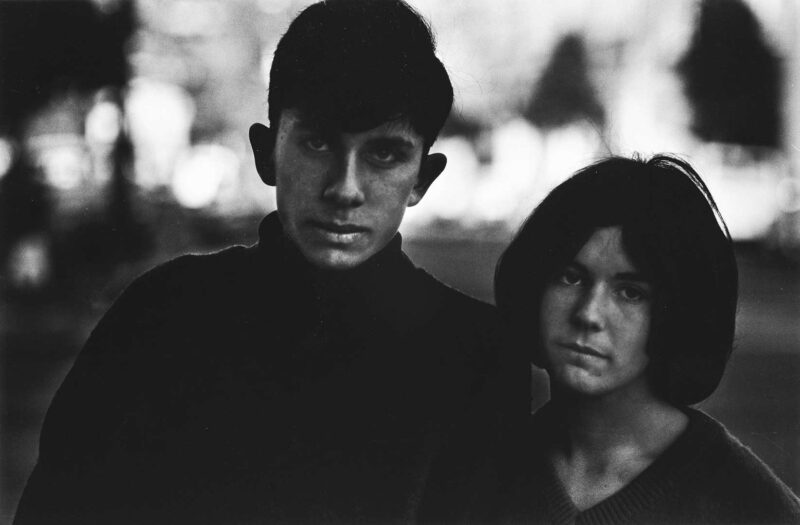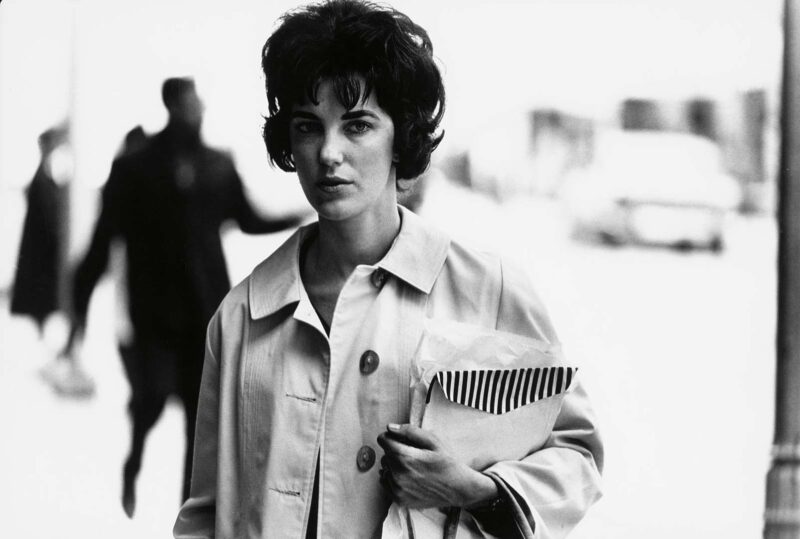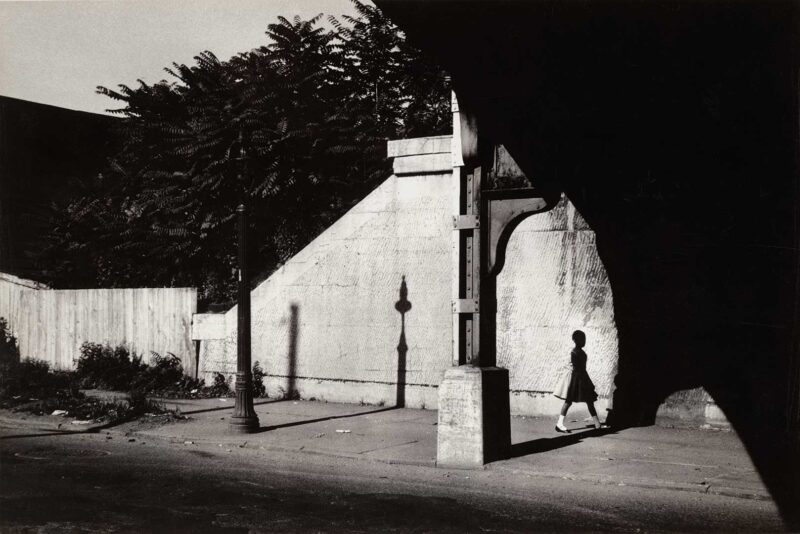[Fall 2019]
By Pierre Dessureault
In a body of work accumulated over more than sixty years, Dave Heath (1931–2016), a Canadian photographer born in the United States, challenged the qualities of the photographic medium and its techniques. He constantly probed, through images, Montaigne’s dictum that “every man carries the entire form of the human condition.”1
The motif that dominates in A Dialogue with Solitude, published in 1965, is the face, and images from the book take up the lion’s share in the recent exhibition Multitude, Solitude: The Photographs of Dave Heath.2 In many of the eighty-two photographs in A Dialogue with Solitude, assembled in ten chapters that summarize his production from 1952 to 1963, Heath isolates and scrutinizes faces on which is inscribed the encounter of two singularities: that of the photographer and that of his subjects, who recognize themselves in the vulnerability of a silent confrontation. In this sense, the ideas of philosopher Emmanuel Levinas could be the keystone of Heath’s search for humanity: “The face is not the mere assemblage of a nose, a forehead, eyes, etc.; it is all that, of course, but takes on the meaning of a face through the new dimension it opens up in the perception of a being. Through the face, the being is not only enclosed in its form and offered to the hand, it is also open, establishing itself in depth and, in this opening, presenting itself somehow in a personal way. The face is an irreducible mode in which being can present itself in its identity.”3
“Identity” is understood here not in the reductive sense of turning in on oneself and sharing a handful of values – as is often the case today – but as an opening to the irreducibility of the Other that is the basis for an individual’s uniqueness. In the instant that the photographer takes the picture, this back-and-forth between identity and alterity crystallizes the encounter with the face, which is offered in its nakedness and proximity as living presence.
Although Heath plants clues to the face’s interiority, it remains an impenetrable surface. The expressions to be read on it, unlike those in a portrait, are somehow depersonalized. The revealing traces of psychological leanings that might link an individual to a personal experience have been obscured by close-up framing, which relegates anecdotal elements to beyond the frame and eliminates the signs that would make it possible to situate the face in a specific space-time. Extensive manipulation of the image in the darkroom4 completes the process of depersonalization. By emphasizing certain details, playing on exaggerated contrasts and deep blacks, Heath models faces, magnifies their expressiveness, and thus situates his subjects not in the public space but in the domain of pure presence. In the end, the faces exist in a time and space that are those of the fixity and density of the image, the result of his successive interventions on the photographic matter and the expressive rendering of the print, which resembles a working drawing.
For Heath, however, “the individual photograph is floating free in space. Something occurs through the accumulation and juxtaposition of photographs – a building and structuring which for me is the language of photography.”5 His early models in this regard were W. Eugene Smith’s current-events photo essays published in Life, and then Robert Frank’s book The Americans, in which he discovered the power of sequences through which each picture becomes an element in a complex grouping. This is the structure of A Dialogue with Solitude, in which each image is skilfully constructed, representing a moment suspended in the totality of a purely photographic time and space, to form a coherent statement. But their association in a sequence, which implies movement, inscribes them in a temporality that is no longer a linear set of events describing a narrative arc that ends in a dénouement, nor one of causal connections that would establish a logical series, but one of a book composed of interweavings, resonances, and ruptures that are made and unmade on a journey through the emotional climates that saturate each of the images. These images are milestones on that journey: they bring to light, in this discontinuous time and fractured space, their author’s attempt to connect himself to his own humanity in the gaze of the other. They are also mirror images of Heath’s soul and his approach of embodiment that transcends the specific to attain the universal within the individual.
Although the subjects in A Dialogue with Solitude are individuals and their inner landscapes, certain aspects of Heath’s epoch rise to the surface in these images. For instance, Heath devotes a chapter to his brothers in arms during the Korean War. Unlike the canonic photographs of the conflict produced by David Douglas Duncan,6 who captured the sordid reality of the war in the heat of the action, Heath concentrates on the faces of his companions, which bespeak a secret, buried fraternity. Elsewhere, images of the cafés that were meeting places for the counterculture and of figureheads of the Beat Generation – Kerouac, Corso, Ginsberg – relate the emergence of a search, which could be Heath’s, for an alternative to the American dream. Above all, the marked presence of social inequalities, and particularly the African American community, whose faces Heath tirelessly scrutinized and to which he devoted a chapter, proceeds from an approach of shared sympathy and proximity that is incongruous with the climate of McCarthyism and racial segregation that was prevalent at the time.
After A Dialogue with Solitude was published, Heath felt the need to deepen his research and reformulate the presentation of his works. This renewal took the form of the slide show. Beyond the Gates of Eden was composed from his production between 1962 and 1969. The images are frontal views of faces, taken with a telephoto lens, and play with depth of field to pull them from the flow of the crowd. Unlike the images in A Dialogue with Solitude, in which the faces are placed in sort of limbo defined by the pictorial space, those in Beyond the Gates of Eden are of anonymous passers-by moving through a public space that remains visible as a backdrop. By affirming the presence of individuals in the urban environment in this way, Heath distinguished himself from his contemporaries, Friedlander and Winogrand, whose approach to the social landscape usually reduced human beings to a motif within the urban visual chaos. Aside from the inexorable succession of faces scrolling across the screen and becoming part of the duration of the projection, two new motifs appeared to reorient Heath’s production. Featured, as a sort of tribute, is Walker Evans’s photograph called Penny Picture Display, Savannah, 1936, showing the shop window for a commercial photographer’s studio lined with a multitude of portraits of anonymous people that are reminiscent of the self-portraits made in Heath’s photo booth, which figure in the title panel of the slide show as his signature. These images mark both the advent of vernacular photography in Heath’s world and the truly autobiographical work that was to dominate his production from then on.
Beyond the Gates of Eden marked Heath’s abandonment of black-and-white pictures and laid the foundation of a new manner. From 1970 to 2016, he would continue his search for humanity, this time experimenting with other expressive possibilities in the photographic medium in works that, although less well known, are just as significant. He produced five slide shows between 1969 and 1982. For instance, in An Epiphany (1971), he juxtaposed his own face, photographed in the photo booth, with important works in the history of art in a testing of his conception of his art practice “as the development of a persona – the development of a mind – and the investigation of what art is about spiritually. . . . I was constructing this character called Dave Heath.”7 In Le grand ALBUM ordinaire (1973), the anonymous portraits that punctuate the history of popular culture and constitute the subject of predilection of vernacular photography are rescued from oblivion and gathered into a family album. At the same time, Heath began to make snapshots produced with a Polaroid SX 70, which enabled him to capture moments of pure encounter – the spontaneity and friendliness of the gesture – in the colour palette specific to this technique. Found images, snapshots, advertisements, articles, collages, autobiographical notes, daily reflections, and readings: all of these materials were also included in a diary that comprised more than two hundred volumes spanning from January 1974 to 2016, when Heath died. They form a sort of synthesis of all the expressive registers that he had adopted in turn, building “diaristic notes that come out of [his] engagement with the world.”8
Translated by Käthe Roth.
2 Exhibition organized for the Nelson-Atkins Museum of Art in Kansas City by the museum’s senior curator of photography, Keith F. Davis, and presented at the National Gallery of Canada 14 March–2 September 2019.
3 Emmanuel Levinas, Difficult Freedom: Essays on Judaism, trans. Seán Hand (Baltimore: Johns Hopkins University Press, 1990), 8.
4 In his article “The Printmaker” in the exhibition catalogue accompanying the exhibition, Multitude, Solitude: The Photographs of Dave Heath (Kansas City: Hall Family Foundation in association with The Nelson-Atkins Museum of Art, 2015, 252–58), Michael Torosian gives a detailed analysis of Heath’s remarkable process involved in printing his images.
5 Dave Heath, Extempore: Reflections and Ruminations on Art & Personal History, elicited and edited by Michael Torosian (Toronto: Lumiere Press, 1988), n.p. Reprinted in Dave Heath: Dialogues with Solitudes (Paris: Steid/Le Bal, 2018), n.p.
6 David Douglas Duncan, This is War! A Photo-Narrative in Three Parts (New York: Harper & Brothers, 1951). The book was assembled from Duncan’s photo reports for Life.
7 Dave Heath, quoted by Keith F. Davis in Multitude, Solitude, 58.
8 Heath, Extempore, n.p.
Pierre Dessureault is an expert in Canadian and Quebec photography. As a curator, he has organized some fifty exhibitions, published catalogues, contributed to books, and written articles on photography. Since he retired, he has devoted himself to studying international photography in a historical perspective and, returning to his early interests, philosophy and aesthetics, to exploring in greater depth the theoretical approaches that have marked the history of the medium.
[ Complete issue, in print and digital version, available here: Ciel variable 113 – TRANS-IDENTITIES ]
[ Individual article in digital version available here: About the Face: The Photographs of Dave Heath — Pierre Dessureault ]

